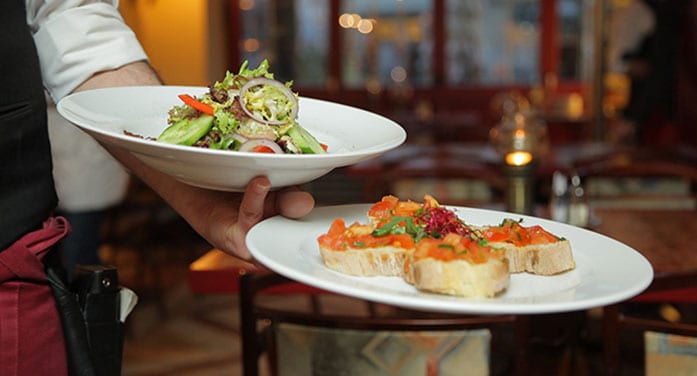 As we inch toward a more normalized economy, the focus will be on how we can make people feel more comfortable about going out and about again. Our economy needs it and our food service sector desperately needs it – but it’s not going to be easy.
As we inch toward a more normalized economy, the focus will be on how we can make people feel more comfortable about going out and about again. Our economy needs it and our food service sector desperately needs it – but it’s not going to be easy.
In a survey conducted in mid-May by the Agri-Food Analytics Lab at Dalhousie University and Angus Reid Institute, 60 per cent of Canadians say they are either fine with going to a restaurant or willing to do so, although with caution.
Still, 40 per cent intend to continue to avoid restaurants. In essence, two out of every five Canadians aren’t even thinking of going to a restaurant. Some of that group will tolerate curbside service or delivery, but many just don’t want to take a chance.
Ontario stands out as the one region where most consumers will continue to avoid restaurants. Fifty-one per cent of Ontarians intend to continue to avoid restaurants for the time being. The most confident province is Quebec, where only 27 per cent of consumers aren’t willing to go to a restaurant yet. Percentages of people wanting to avoid restaurants in Manitoba and the Atlantic provinces are high, but both places are in the middle of their worst waves of COVID to date.
Statistics Canada tells us that the accommodation and food service sector is hiring about 74 per cent of the number of employees it had before the pandemic started in March 2020. Revenues are at 76 per cent of the levels we saw before the pandemic.
The sector faces significant challenges but not so much that Canadians should underestimate its resiliency. It will recover, no doubt, but it will also need some help.
While the vaccination campaign is progressing well, COVID-19 variants are really making our vaccination efforts a race against time. Most Canadians will think about safety and their health before thinking about having a meal on the patio with family and friends.
But living in fear is a terrible thing and restaurants offer the perfect escape when Canadians are willing to go out again while taking proper precautions.
Many provinces and municipalities have provided financial assistance and support to accommodate restaurants in pursuit of more cash flow, as well as the funds to create new outdoor space to serve patrons safely in place of indoor dining.
On the other hand, the federal government has made it quite clear it doesn’t intend to do much for food service, at least not directly. Supporting the private sector without any intervention for non-profit organizations or Crown corporations hasn’t been a popular option for the government since the start of the pandemic. The airline situation was a perfect example.
In the United States, the Restaurant Revitalization Fund opened its portal this week, allowing hard-hit restaurants, bars, food trucks and more to apply for US$28.6 billion in grants. This fund will provide some assistance to make dining establishments safer. It’s a massive amount compared to what Canadian operators have received.
Now that we see an end to the pandemic – sort of – we need to think of ways to get people going out and about again. A recent survey suggests many Canadians have gained weight since the start of the pandemic, essentially due to our even more sedentary lifestyles.
If people are fearful of places like restaurants, our economy and small businesses will struggle. Over the next six months or so, people will be out no matter what; the pent-up demand for social gatherings will be a strong influence. But restaurant operators will need to make their patrons feel safe.
Depending on how things progress over the next 12 months, providing Canadians with incentives to get out could also play a key role and send a more reassuring message. For example, tax credits could be granted for patronizing restaurants and hotels and frequenting gyms, yoga classes, and other well-being services.
The Canadian economy lost 207,000 jobs in April and our unemployment rate went up again. Supporting small businesses and the service sector will be key to a strong, sustainable economic recovery.
Given the flexible nature of many of these professional opportunities, the majority of these jobs are occupied by women, those most hard-hit by the pandemic.
Many will want to stay home for safety, and we need to respect that, but others will need that extra nudge after a year and a half of hibernation. It’s a different market out there, and governments can play a role by being more positive and reassuring while keeping everyone as safe as possible.
Dr. Sylvain Charlebois is senior director of the agri-food analytics lab and a professor in food distribution and policy at Dalhousie University.
Sylvain is one of our Thought Leaders. For interview requests, click here.
The views, opinions and positions expressed by columnists and contributors are the authors’ alone. They do not inherently or expressly reflect the views, opinions and/or positions of our publication.


